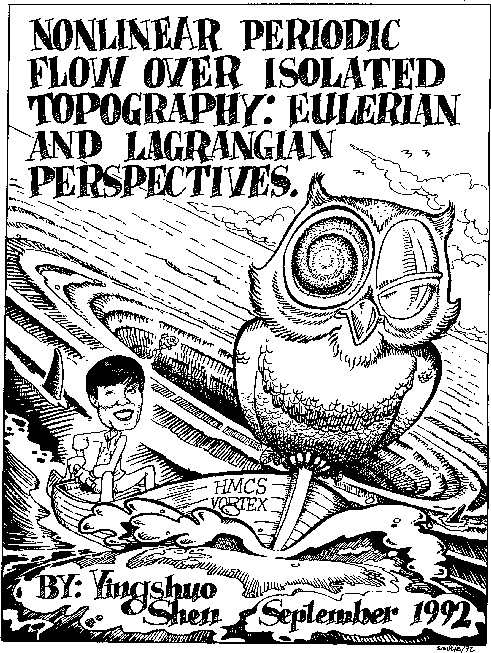
In order to obtain particle motion with confidence, the Eulerian flow field is calculated, analyzed and compared with previous studies. Topographic Rossby waves are excited by the sloshing of the tidal flow over the bump. The analytical model predicts a linear relation between the fractional depth change and the resonant frequency of the first mode topographic Rossby wave, in agreement with Rhines (1969). The tidally- rectified mean Eulerian flow and elevation slope are also predicted for the rectilinear tidal flow. The results agree with those of Loder (1980) only for high frequency flow (e.g. M_2 tide). For weakly nonlinear flow, it is also shown that Eulerian mean effectively cancels the Stokes drift. Long-term particle movements are described in terms of "tidal Poincaré maps" which show the net displacement of a grid of particles over one tidal period. For high frequency and weak advection, particles are retained over the bump and exhibit small net displacements over a tidal period. Even with increased advection, there are always some "islands" surrounding elliptic points where particles stay together and exhibit weak mixing and dispersion. For low frequency and weak advection, the particles are still trapped over the bump but are subject to strong mixing.
Returning to the underlying question posed above, I conclude that there is no simple parameterization of mixing associated with tidal flow over a bump. The tidal Poincaré maps are highly complex, with many elliptic and hyperbolic points whose location, and even existence, are strongly dependent on the Rossby number, the forcing frequency, and finally the frictional spin- down time in pendulum days. I speculate that near resonant topographic Rossby wave may make a major contribution to the complexity of tidal Poincaré maps. However, the question as to whether such resonances determine the onset of chaotic particle motion (Pratte and Hart, 1991) remains open.